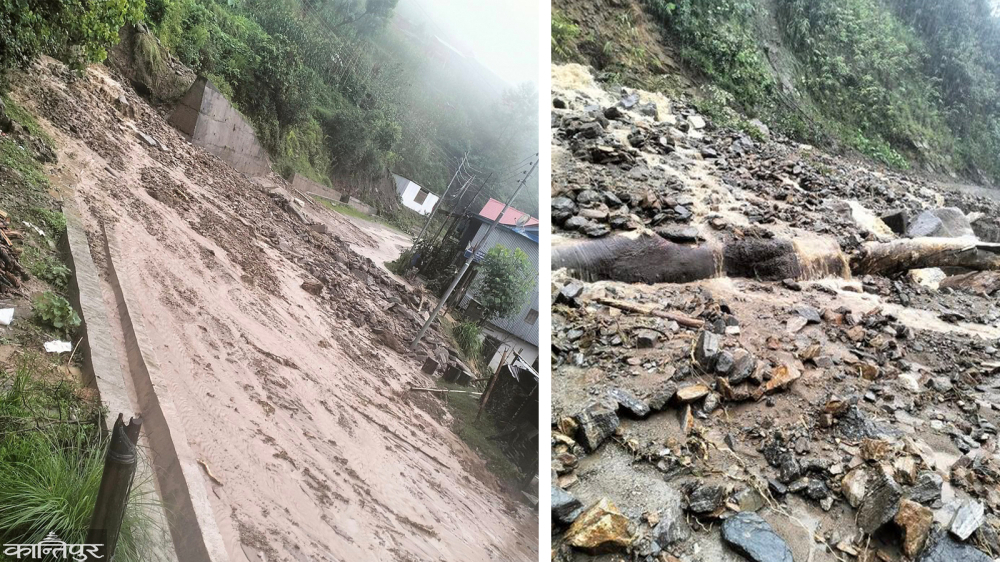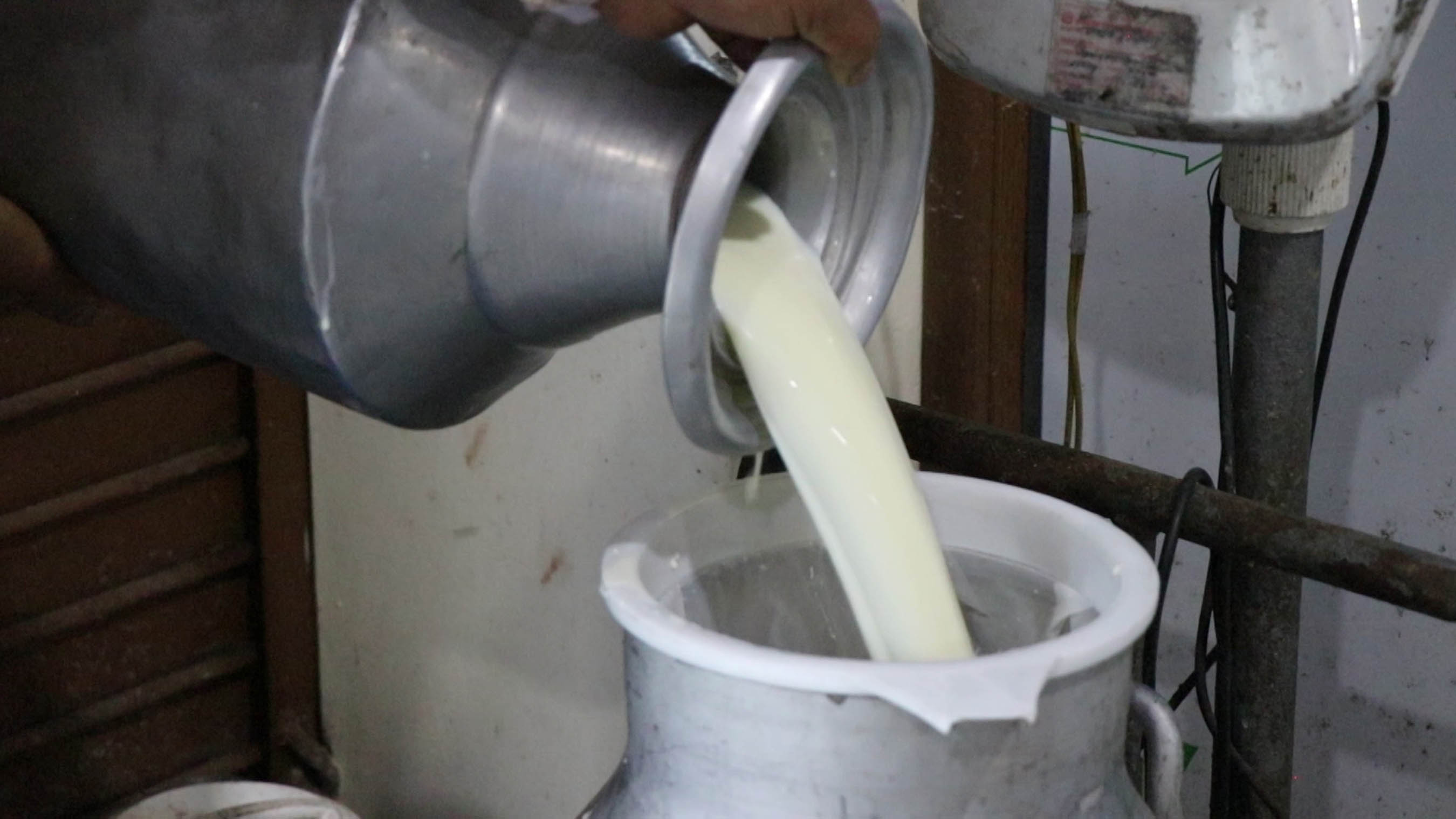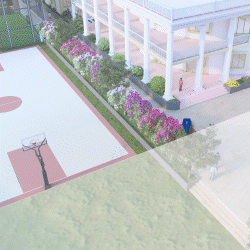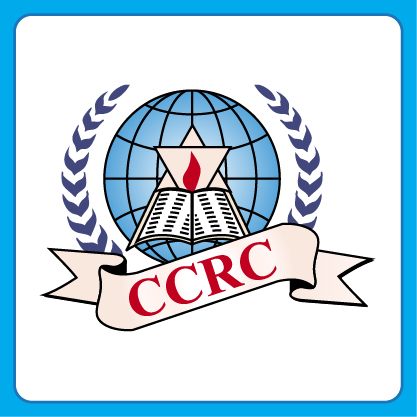Floods and landslides: Vulnerable groups are always at risk
We use Google Cloud Translation Services. Google requires we provide the following disclaimer relating to use of this service:
This service may contain translations powered by Google. Google disclaims all warranties related to the translations, expressed or implied, including any warranties of accuracy, reliability, and any implied warranties of merchantability, fitness for a particular purpose, and noninfringement.


A video went viral on social media on the fourth day of flood in Melamchi river in Sindhupalchok on June 1, 2078. In the video, the residents of Helambu Rural Municipality-1 Timbu were begging for relief materials and safe accommodation.



Asha Gurung, who started speaking by identifying herself as Timbubashi, said that even after four days of being displaced, she was forced to make a video because she did not get help from anyone. Four women and five men are seen in the video of 4 minutes and 54 seconds. 11 families including Asha fled to save their lives as soon as they found out about the flood.
They were not able to save anything except a single piece of clothing. "Yesterday, it would have been a great thing to be alive, but today it has been four days, since no organization or government is looking at it, now it seems that it would be better to die than to live," she said in the video. We have fallen down.' She also narrated many incidents of children being injured and starving when they ran away with them. Up to the fourth day of being displaced, they were making a living with the help of their neighbours.
'It is not always possible for them to give,' she said in a desperate expression, 'there were two grocery stores, now there is no ration, there is no situation to bring them.' She has also requested them to convey their voice to the government and stakeholders. "Three-four people are pregnant, they are very confused and scared, we kindly request you to send this video to the government and organizations as soon as possible," she said.
Asha speaks at Pasang Gyalbu La in Timbuktu. He said that since the flood destroyed the roads and bridges, it was only possible to bring relief by helicopter and as seen in the news, all the relief was concentrated in the Melamchi market, about 16 km south.
'We have heard that a lot of relief has been distributed as it is very easy for everyone to come to Melamchi,' he said, 'but the residents of Thimbu have not been able to get any such relief so far, 11 households have been completely displaced from Melamchi market.' It is at a distance of 42 km.
Five people from the lower coastal area of Helambu rural municipality and Melamchi municipality lost their lives due to the flood that came from Vremathang in Helambu. 20 people who were affected by the flood are still missing. 720 houses were uninhabitable and damaged. The much awaited Melamchi drinking water distribution in Kathmandu valley has been affected after the damage to the 'intake' (headbarks) area of Melamchi.
Government's 'Disaster Risk Reduction and Management Act, 2074' states that special plans and programs should be given priority in relief and rescue for women, children, senior citizens, Dalits, marginalized groups and communities, disabled and disabled persons who are at risk of disasters. ;
However, the plea made by the residents of Timbubhai, who are 58 km from Kathmandu, when they were affected by floods three years ago, has flouted the civil rights granted by law. Nurse Rita Bhattarai of Mahankal health post in Helambu said that the locals are still affected by the floods of 078 Asar. The road connecting Helambu and Melamchi continues to deteriorate after rains . The road is buried by landslides. Even if the rural municipality buys an ambulance to rescue the emergency patients, it cannot be operated due to damaged roads.
She said, 'I also give birth at the birthing center, but the pregnant women leave Kathmandu a month and a half before to reach the health post and get referred.' She said that due to the fear of disasters like flood, landslide, and earthquake, they come to Kathmandu looking for health facilities with facilities. 
Under the fundamental rights of the constitution, every woman has the right to safe maternity and reproductive health . The government implements a monsoon disaster response action plan every year. Special efforts are made to ensure that vulnerable groups (female-headed households, single women, women in the final stages of pregnancy, persons with disabilities and the elderly) have access to relief . However, the paper system does not touch the victims of the flood. And in that weak situation, the calamity continues to strike.
On 14th July 2077, after the house was submerged by flood, Kailali Bhajani's mother Rupsha Vick had to stay on the street for a week with her newborn baby. Rupsa, who saved her life and the life of the newborn baby by running away in one piece of clothing, could not rest and eat nutritious food. Suffering due to flood in her delivery state, she shivers on a cloudy day.
The government has estimated that 1.8 lakh 1 thousand people and 4 lakh 12 thousand households may be affected by the monsoon disaster this year. This year, the Department of Water and Meteorology has predicted that rainfall will be more than the Sardar rate i.e. 35 percent to 55 percent in many parts of the country. The National Disaster Risk Reduction and Management Authority under the Ministry of Home Affairs has also prepared the 'Monsoon Preparedness and Response National Action Plan 2081'. According to the action plan, it is estimated that 83,000 households may be directly affected and 18,000 households should be rescued and relieved.
action plan states that the needs of lactating women, infants, children, the elderly and people with chronic diseases should be addressed in the relief package, special efforts should be made to ensure that vulnerable groups have access to relief, and attention should be paid to water sanitation and hygiene facilities. is . Monsoon Response Action Plan 081 states, "Collecting disaggregated data on gender, age and disability is a prerequisite for gender and social inclusion during the formulation, implementation and analysis of response programs." .
Deputy Secretary and Spokesperson of National Disaster Risk Reduction and Management Authority, Dijan Bhattarai admitted that preparation is being done by extracting segmented data on how many age groups and statuses are affected in which houses of only 8/10 municipalities.
Krishna Karki, a disaster preparedness and response expert, says that if the government does not have fragmented records, it will fail in preparation. "If the stock was kept in advance, the material would arrive immediately, this has not happened in the government system," she said, "When there was a flood in Melamchi, three/four packets of sanitary pads reached even the homes of some of the affected people in the market area who did not menstruate, but not a single one reached anywhere. Later, we found out during the 'assessment'. She said that the local levels should be made independent in terms of resources to implement the action plan made by the federal government. "The local levels tend to distribute rice, grains, sexual and reproductive health and hygiene materials for pregnant women, pregnant women, and the like, she said. "Government can also send resources to the local level by prioritizing the gender and social aspects of the relief efforts.
Nurse Bhattarai of Mahankal Health Chowki in Melamchi also felt the need for sanitary materials such as sanitary pads while distributing relief to the flood affected women in Melamchi. "Thankfully, the organization helped us and we were able to distribute it. It is said that there will be a lot of rain this year as well, so much preparation has not been done," she said.
Landslides occur in mountains and hills every monsoon. The flood comes. The valley sinks . According to the Ministry of Home Affairs, 39 men and 52 women died due to heavy rains across the country from 068 Baisakh 27 to 081 May 21 . 6 thousand 26 families were affected by heavy rains in the last 13 years. 288 men, 126 women and 23 unidentified people died in the flood from 068 June 22 to 081 June 21. A total of 899 people died. 584 people disappeared.
69 thousand families were affected in 059 . 567 men, 444 women and 7 unidentified people died in the landslide from 068 Baisakh 31 to 081 May 25. A total of 534 people died. 356 disappeared. 12 thousand 137 families were affected. Disasters such as floods and landslides have a direct or indirect impact on women, girls, teenagers, the elderly, gender and sexual minorities, people with disabilities, and pregnant women, but little attention is paid to preparedness. Why should priority be given to the target group, if the disaster breaks apart the family and social structure .
As stated in the supporting material on 'Sexual and Reproductive Health Services for Adolescents in Disasters' prepared by the Ministry of Health, adolescents are at risk of poverty, violence, abuse and exploitation and atrocities due to the lack of security, livelihood and protection provided by the community and family. Adolescents who have lived through disaster may not be positive about their future and express pessimism about the future . 
Advocate Savin Shrestha, who has been advocating in the field of sexual and reproductive health rights, says that the policy arrangements included in the central level disaster response should be localized and implemented.
'Everybody needs relief in a disaster, resources are limited, politics also works, at such a time, one should have the ability to use discretion to identify who is the most affected by the disaster,' he said, 'If we want to look at the path of gender and social inclusion, now is the time. To some extent, hygiene kits have been distributed, apart from this, not much work has been done in family planning, safe abortion services, sexual and reproductive health. He said that due to the cold, there were many health effects and it was inhumane behavior by keeping women and teenagers in other places when they were menstruating even when they were sitting in the terrace.
As available in the authority's warehouse software for this year's monsoon response, there are 35,000 hygiene kits, dignity kits and other materials available in various warehouses across the country. All these materials are collected with the help of UNFPA, UNICEF, Red Cross, Save the Children, Plan International and other donor agencies.
Bhattarai, Deputy Secretary and Spokesperson of the Authority, said that due to the limited resources of the government, the preparations for sanitation and hygiene have been overshadowed and organizations have to rely on them. "Slowly, the state system is trying to include it in relief and rescue, considering it as a necessity and responsibility," he said, "The local level is in the place of implementing the action plan that has been made to keep the marginalized and vulnerable groups as a top priority in preparation, relief, rescue and rehabilitation, it is necessary to make them aware. '
 प्रकाशित : असार ७, २०८१ १७:४१
प्रकाशित : असार ७, २०८१ १७:४१

 २४.१२°C काठमाडौं
२४.१२°C काठमाडौं





















